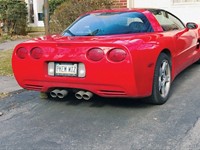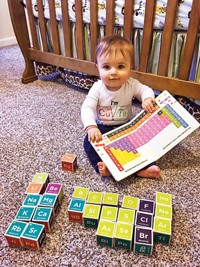Advertisement
Grab your lab coat. Let's get started
Welcome!
Welcome!
Create an account below to get 6 C&EN articles per month, receive newsletters and more - all free.
It seems this is your first time logging in online. Please enter the following information to continue.
As an ACS member you automatically get access to this site. All we need is few more details to create your reading experience.
Not you? Sign in with a different account.
Not you? Sign in with a different account.
ERROR 1
ERROR 1
ERROR 2
ERROR 2
ERROR 2
ERROR 2
ERROR 2
Password and Confirm password must match.
If you have an ACS member number, please enter it here so we can link this account to your membership. (optional)
ERROR 2
ACS values your privacy. By submitting your information, you are gaining access to C&EN and subscribing to our weekly newsletter. We use the information you provide to make your reading experience better, and we will never sell your data to third party members.
Education
Newscripts
Reality TV For Engineers, Chemistry Toys For Boys
by Sophia L. Cai
May 20, 2013
| A version of this story appeared in
Volume 91, Issue 20

It’s what we’ve been waiting for here at Newscripts: “Project Runway” with a science twist. Earlier this month, the Discovery Channel aired the pilot of “The Big Brain Theory: Pure Genius,” a reality competition show featuring 10 geeky contestants competing for $50,000 and a one-year job contract at the design and engineering firm WET.
Contestants get 30 minutes to design a solution to a made-for-TV engineering problem. Then the judges—Mark Fuller, chief executive officer of WET, and Christine Gulbranson, a renewable energy innovator—choose their favorite two ideas. The contestants who dreamed up the preferred solutions get to pick their teams, playground style.
In the pilot, the teams have to prevent two trucks with explosive cargo from blowing up on impact as they race toward each other at 35 mph.
Both teams’ designs fail, resulting in a massive explosion and the elimination of one of the team leaders. But don’t be fooled, the contestants are smarty-pants: The show touts their occupations (rocket scientist, product design consultant, robotics Ph.D. student) and IQs.
“The series features some of the greatest young minds in America,” according to host Kal Penn. “There is a lot at stake within the show itself, and in terms of what it signifies.” Penn, known for playing a nonbrainy pothead in the “Harold and Kumar” movies, is a former associate director of public engagement for the White House and the son of an engineer.
What may be at stake is the public’s perception of science as fun, competitive yet collaborative, and downright cool. If this group keeps failing at challenges and accidentally blowing things up, they may well succeed.
The stars of the Discovery show represent geographic and racial diversity, but of the 10 contestants, only two are women. Encouraging girls to enter science is an ongoing challenge that may start long before their first math or science class.>/span>

Earlier this month, British retail giant Tesco stood by its decision to label a kiddie chemistry set a boys’ toy, explaining via Twitter that its designation was determined by shopping habits. It has since backtracked after receiving criticism from consumers and gender equality groups.
Online advocacy group Let Toys Be Toys cried foul on Twitter, saying that if schools took a Tesco approach, teachers wouldn’t bother teaching science to girls. After an onslaught of criticism, Tesco admitted its choice was “incorrect.”
Boots, a British drug store chain, came under similar fire last month when consumers complained about placing all Science Museum-brand toys in its boys’ toy section of its stores and website. Girls’ toy shelves included a tea set, princess kit, and Hello Kitty beader.
Boots has since removed its gender-specific labels and responded to accusations of sexism in a statement, saying placement was meant to help shoppers and that the company has “always been proud of supporting women in science and in particular in their careers in pharmacy.”
Let Toys Be Toys’ initial criticism of Tesco was that it labeled the Action Science Chemistry Set as a boys’ toy and the Hotpoint Toy Cooker a girls’ toy. At C&EN’s press time, Tesco’s website had changed the label for the chemistry set and other science toys to read “unisex.” Meanwhile, the toy cooker and a play laundry set continue to be labeled as girls’ toys.
Sophia Cai wrote this week’s column. Please send comments and suggestions to newscripts@acs.org.





Join the conversation
Contact the reporter
Submit a Letter to the Editor for publication
Engage with us on Twitter